Here's why the St. Casciano bronzes are so exceptional. Interview with the director of the excavation
News came on November 8 of theimportant discovery in the Roman sanctuary at San Casciano dei Bagni (Siena) of no fewer than 24 bronze statues in excellent condition and other finds: an intact treasure that represents the largest deposit of statues in ancient Italy and the only one whose context can be entirely reconstructed. We put some questions to the director of the excavation, archaeologist Emanuele Mariotti, to let him tell us about the exceptional nature of this discovery. The interview is by Ilaria Baratta. 
IB. A very important discovery that has been made: but why is it considered so extraordinary that it is considered the most important one after that of the Riace Bronzes?
EM. The real exceptionality, besides the quality of the bronzes themselves and the quantity, as well as the co-presence of Etruscan inscriptions and Latin inscriptions, which is not so usual, lies in the context in which the finds were found: they were found, through targeted research, in their original context. These kinds of objects, particularly bronzes, were often recovered in old excavations or out of context and not in the place where they were originally. The San Casciano dei Bagni excavation tells us a much more complete story, and that is the real added value. Moreover, the extraordinary thing is that we are inside a sanctuary, a large sacred pool dedicated to water and the healing effects of water while there is still water. It is therefore something alive.
The fact that archaeologists found themselves in front of a treasure still intact, the largest deposit of statues in ancient Italy, gives the possibility to entirely reconstruct the context. So what is the context?
We’re studying it now, but a clear stratigraphic sequence has emerged: bronze gifts, large and small statuary, anatomical parts, bronze figurines from the late Etruscan period are donated and placed in the sacred pool as an offering to the waters and the gods. So the ritual is clear now: inscriptions on the found objects tell us of families dedicating these to the deities to be saved and cared for. This part is then closed and rebuilt in Roman times, and from the bronzes and small bronzes we move on to the copious monetary offerings that take the place of the bronzes. After that we go again to the offering and the setting up of altars with inscriptions dedicated to Apollo, Hygieia, Aesculapius, Fortuna Primigenia, Isis, all of which we found two years ago, and the whole thing is closed at the time when the sanctuary is demolished and sealed at the end of the pagan era. So we go from the cultural intermingling of the Etruscans and Romans to the Roman-era devotion to the final act of pietas, that is, the closing of the pagan temple at the moment when the Christian era finally takes over, forcing the closure of this and so many other places.
In light of the context, what do we understand about the ritual value of offerings?
They are offerings intended to heal ailments, pains, even particular parts of the body; offerings dedicated to the gods to be saved and protected. The full ritual escapes us because we don’t know the manner in which the statues were placed inside the pool, whether they were thrown, leaned on or lowered...certainly some were not votive offerings, but ornamental statues that stood on the edge of the pool, such as the statue of the Archer Apollo that we have found, and then were placed inside at the time when the Romans, in the early imperial period, rebuilt it. There are so many facets to this ritual, which we are now studying, because we are dealing for the first time with a context that can be studied. There are sixty scholars involved in reconstructing all the different aspects (chemistry, geophysics, physics, archaeology, ceramics, botany, statuary, art history, Etruscology, Romanesque).
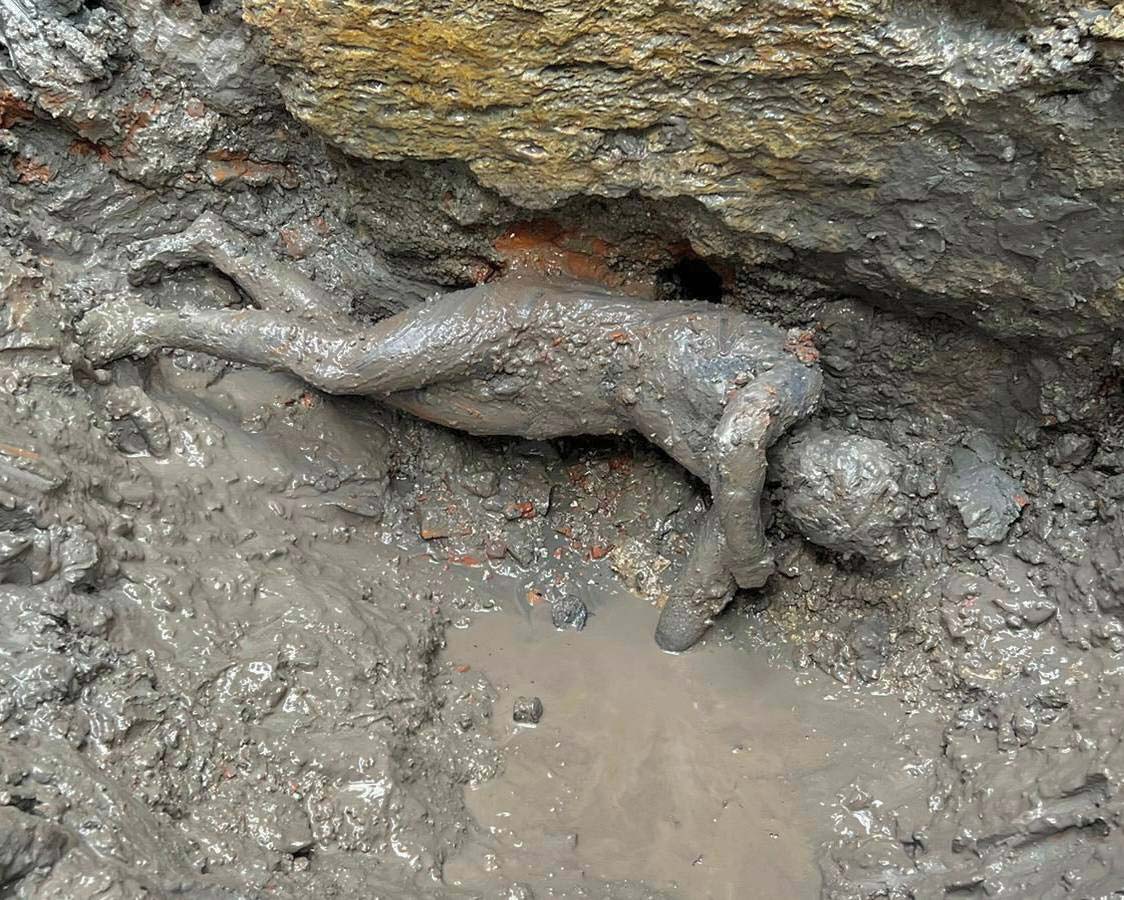
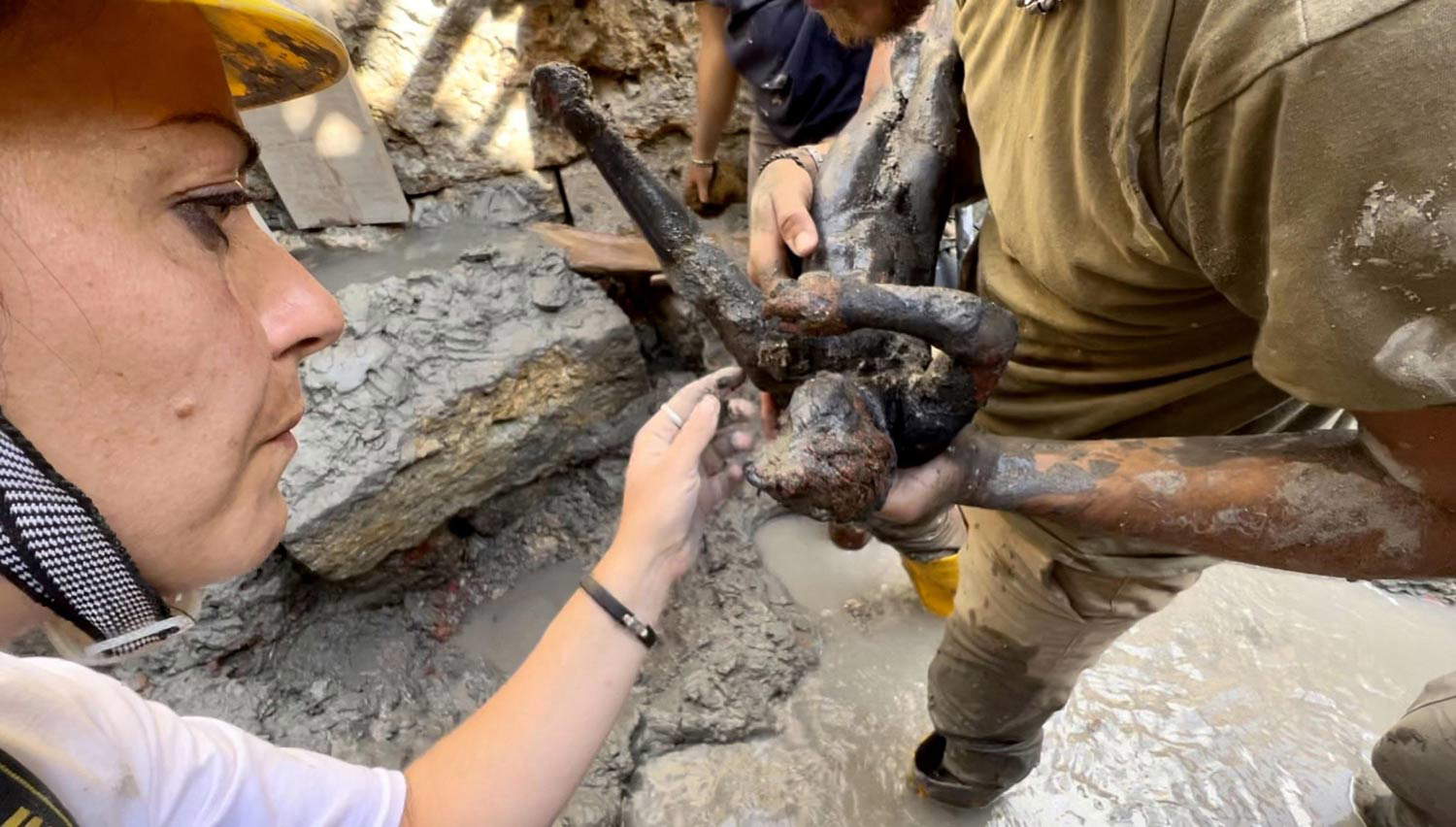 The bronze statues discovered in San
The bronze statues discovered in San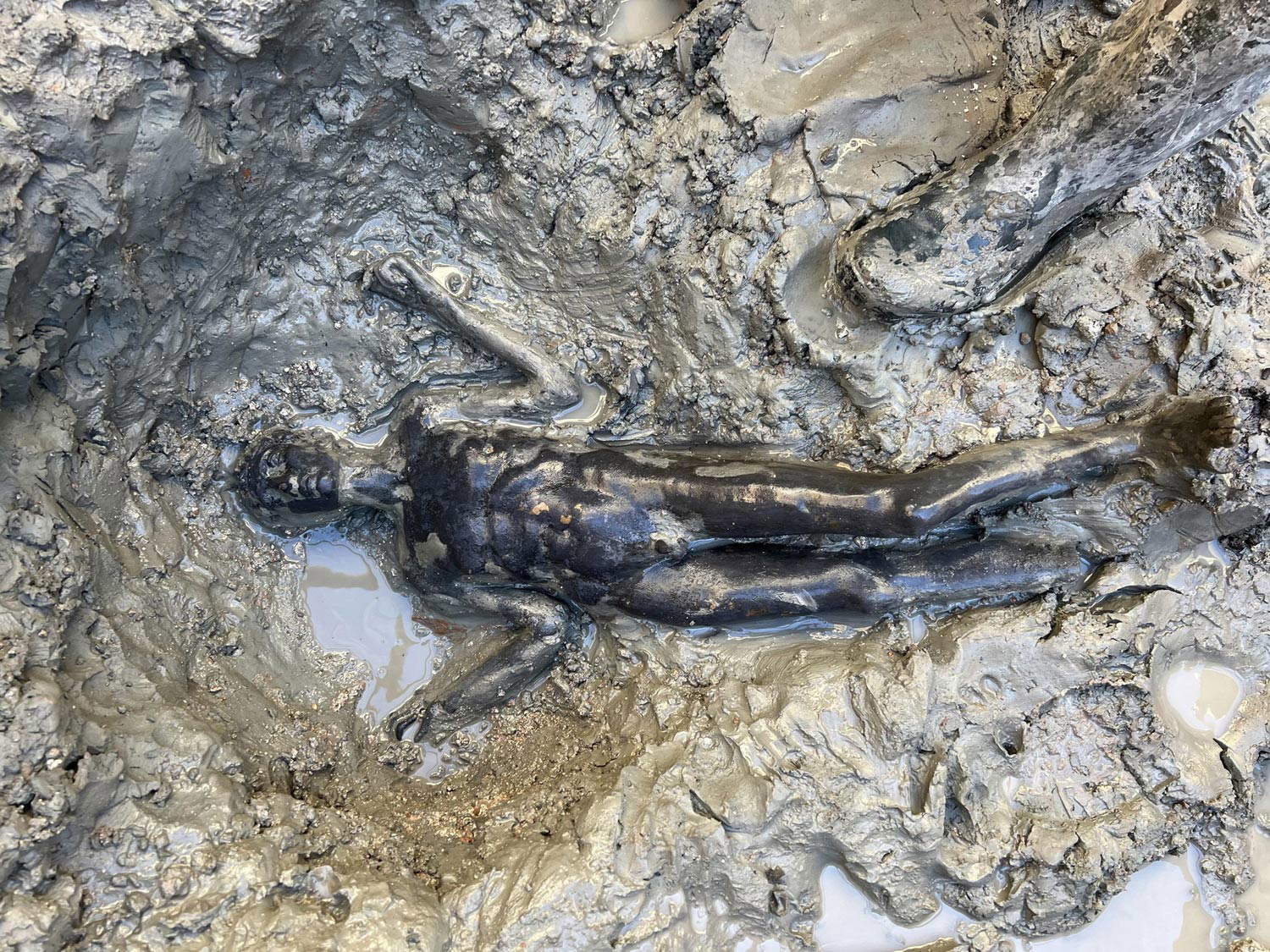 The bronze statues discovered in San
The bronze statues discovered in San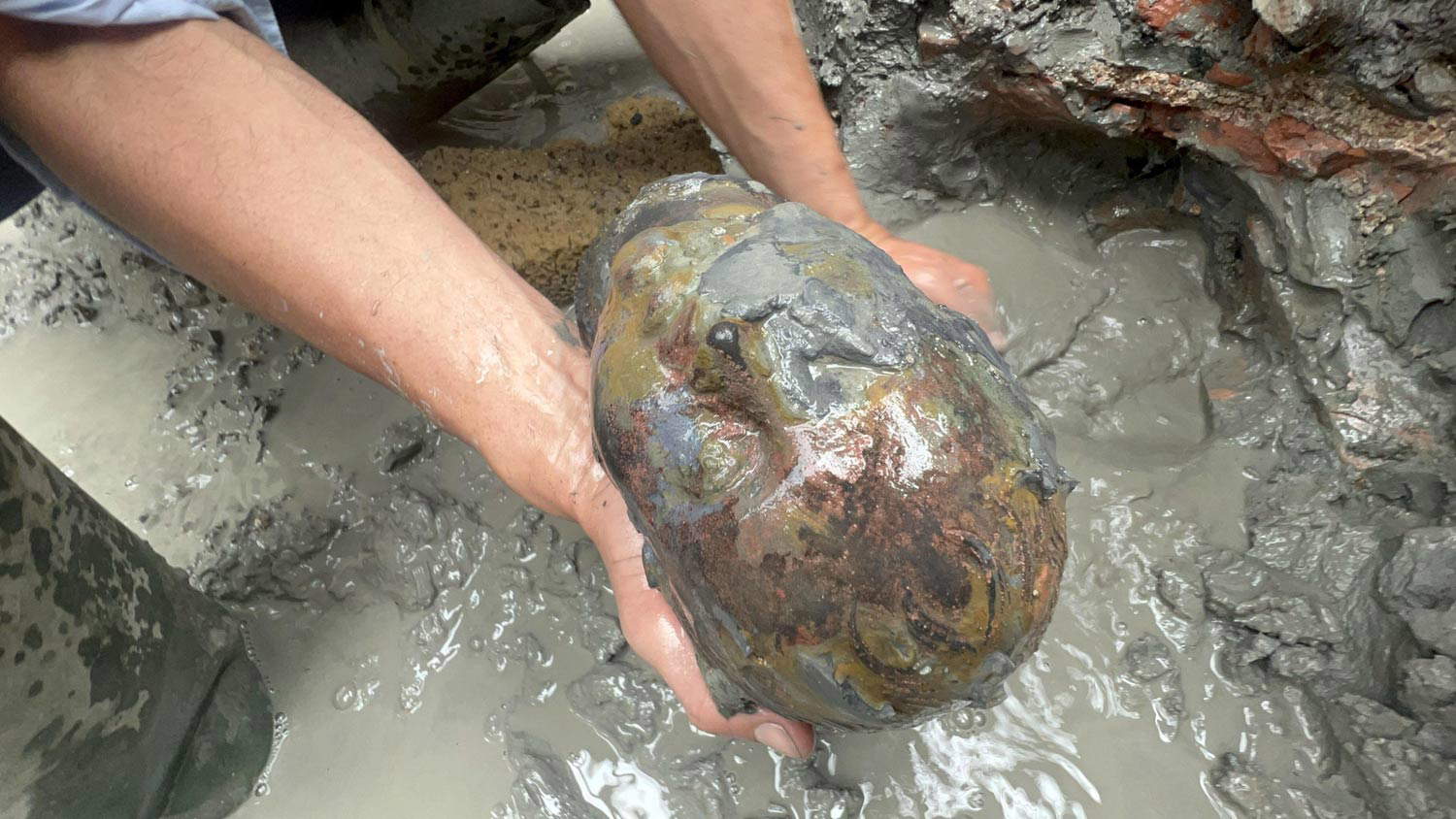 The bronze statues discovered in San
The bronze statues discovered in San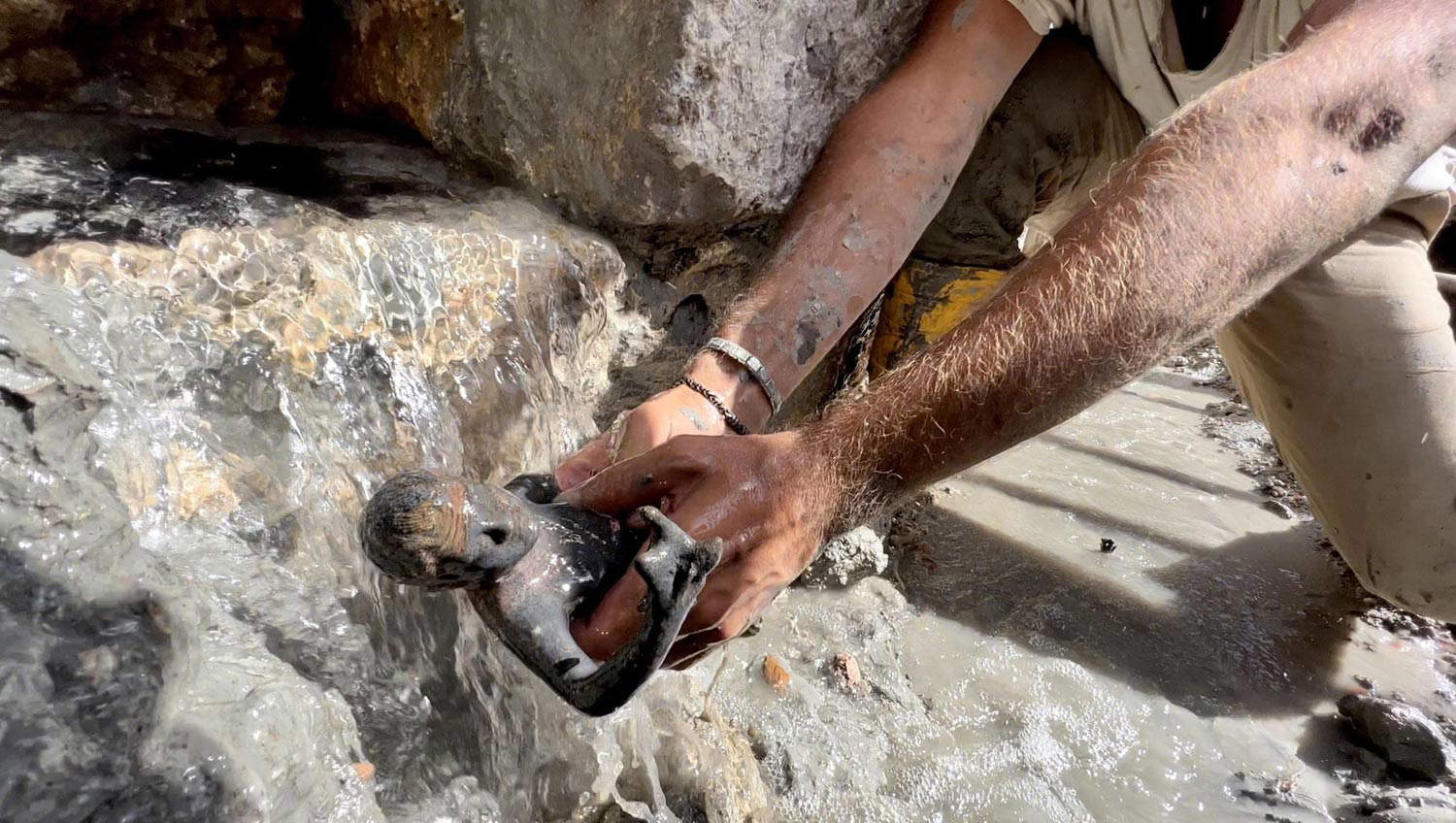 The bronze statues discovered in San Casciano
The bronze statues discovered in San Casciano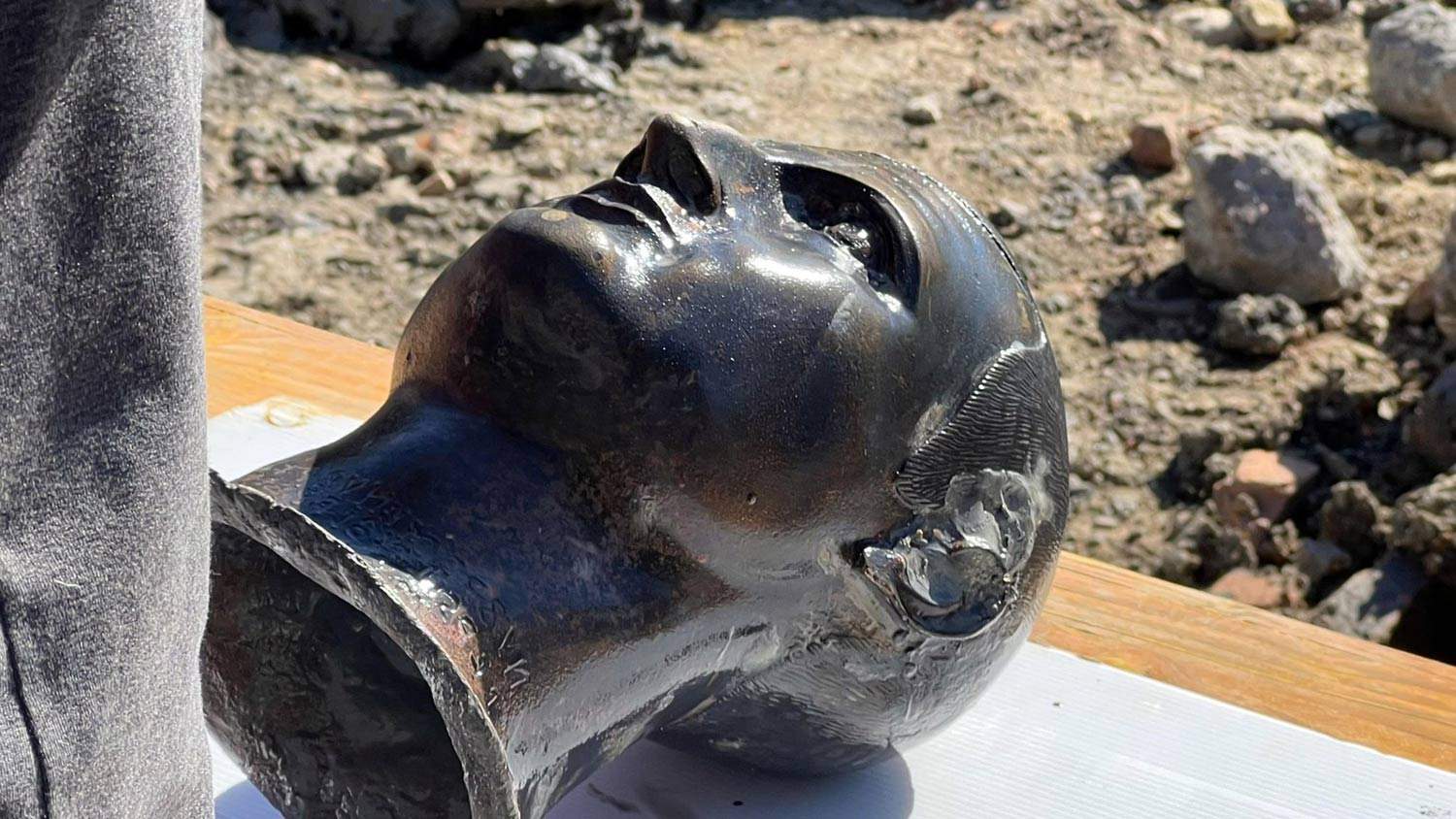 The bronze statues discovered in San Casciano
The bronze statues discovered in San CascianoEtruscan objects and Roman objects were found in the excavation. Why is this co-presence important?
The process of Romanization is a long and violent process, which also sees many wars and which does not end in a single act, but lasts for 150 years, at least. It is also a very current theme, that of the transition to a different culture and language, to a different political assertion, and here we see both entities coexisting: there are those who try to say “I am still Etruscan” and write it on the bronze statues, and those who say “I am Roman” and on the statue place a Latin inscription. That is the theme: the mingling of the two worlds, the two peoples, which is an anti-violent and nonetheless long path, but which finds in that place a coexistence.
Did you expect to find something so important? Did you expect to find anything else?
We expected to find something important when we found so many coins and small bronzes last year, as well as a bronze putto. That put us on alert and allowed us to realize that we were possibly looking at an intact votive deposit, sealed by the columns knocked down in the fifth century A.D. when everything was closed. The hope then that we could find the rest of the votive deposit (the one in the central part of the basin) was there, and in that sense we had been right. The excavations will continue, they are not finished, and also in other areas and all around we expect to be faced with more surprises, even in the coming years.
The role of water proved to be central in this excavation. In what sense did this enable excellent preservation of the finds?
First of all because of the chemical properties of the thermal water, which is hot and has special chemical properties and has very little sulfur, but most importantly the water carries clay. The materials have been preserved for two thousand years without oxygen in the clay and thermal water, and this has preserved the bronze in excellent condition. The moment the bronzes are extracted the oxidation process starts and they can begin to spoil right away. They suffer a shock. So they were immediately taken to the Superintendency’s Restoration Center to stabilize them and preserve them as best as possible.
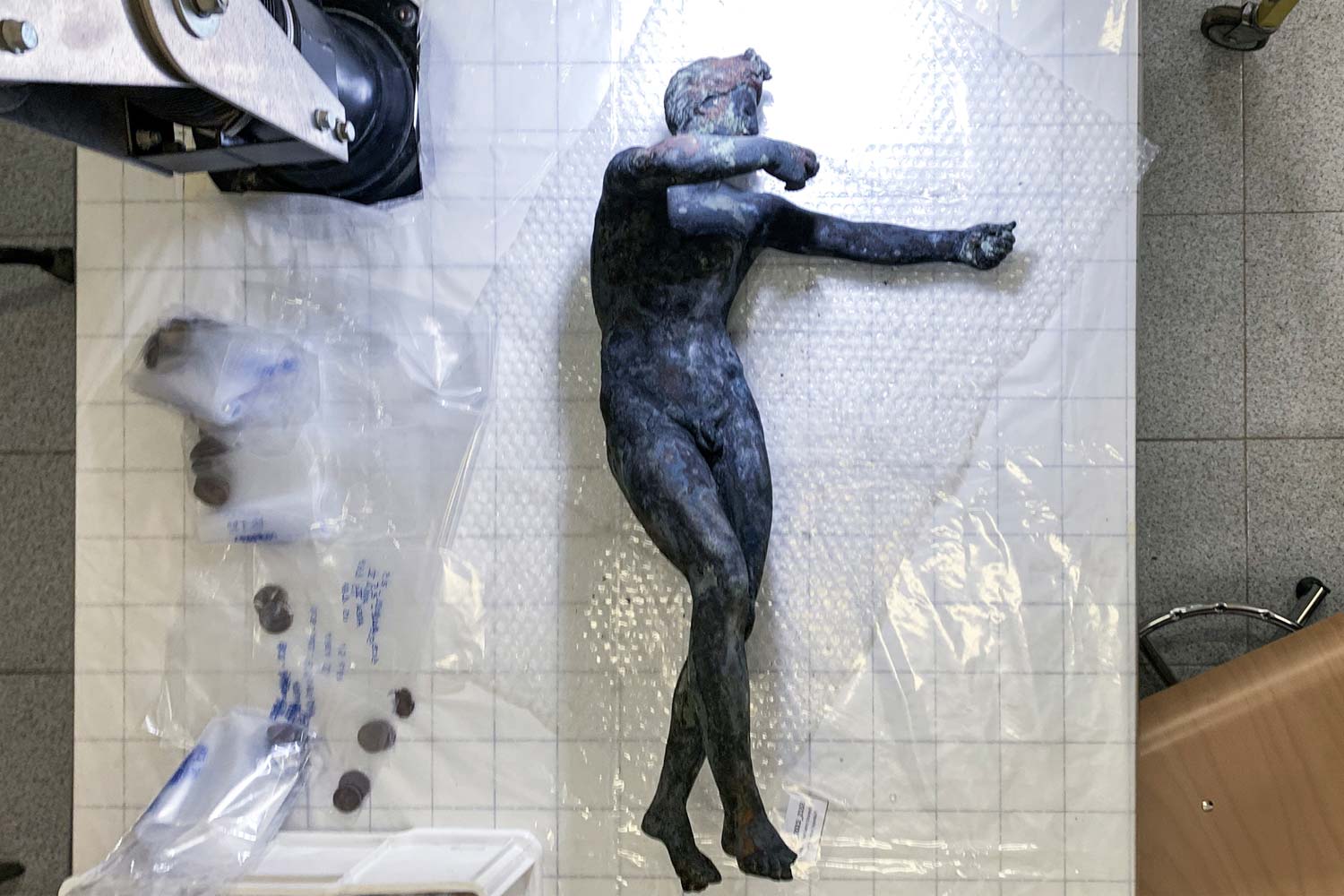
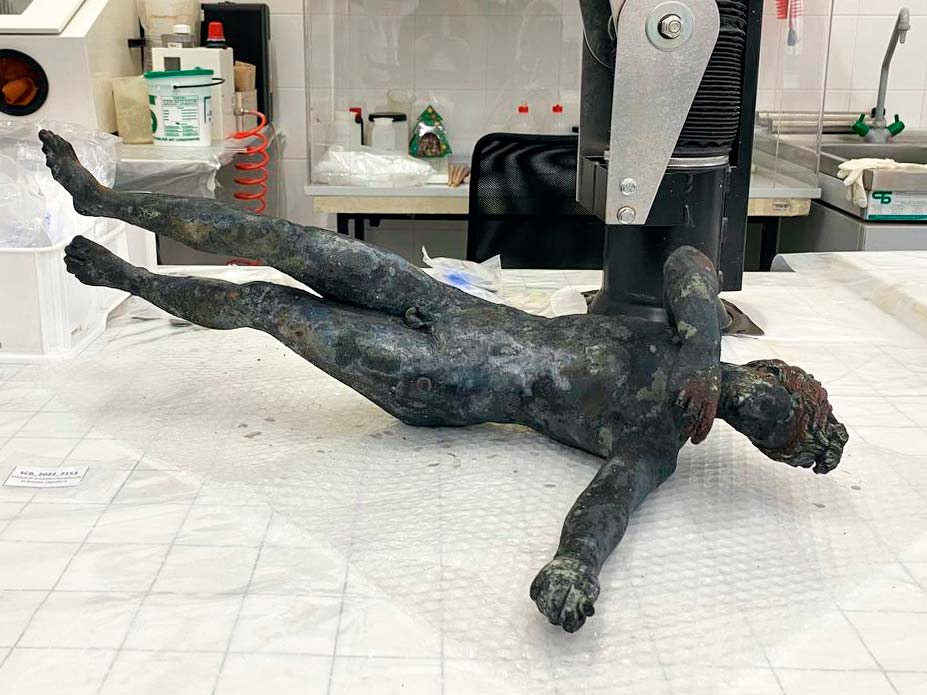 The bronze statues discovered in San
The bronze statues discovered in San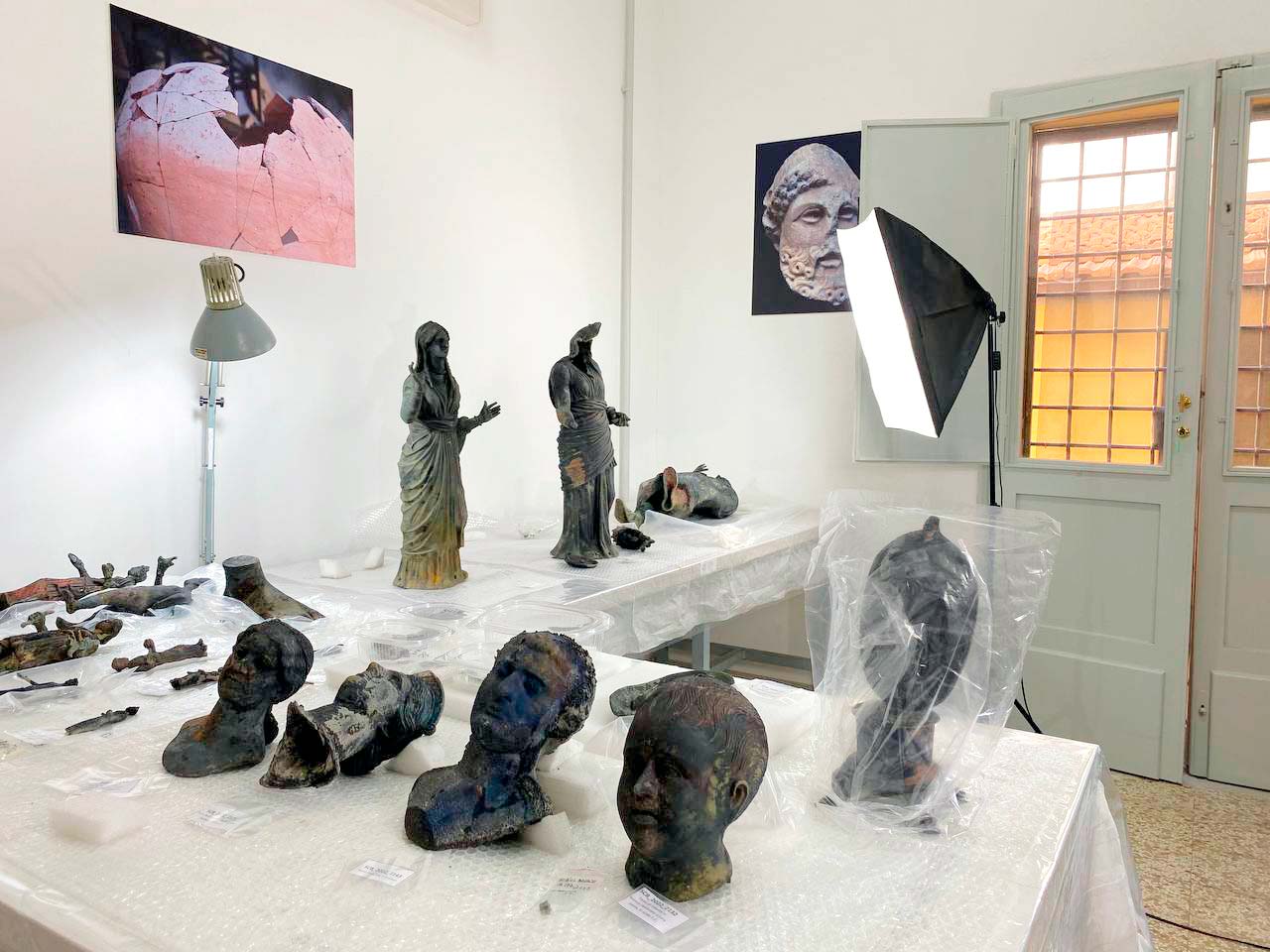 The bronze statues discovered in San
The bronze statues discovered in San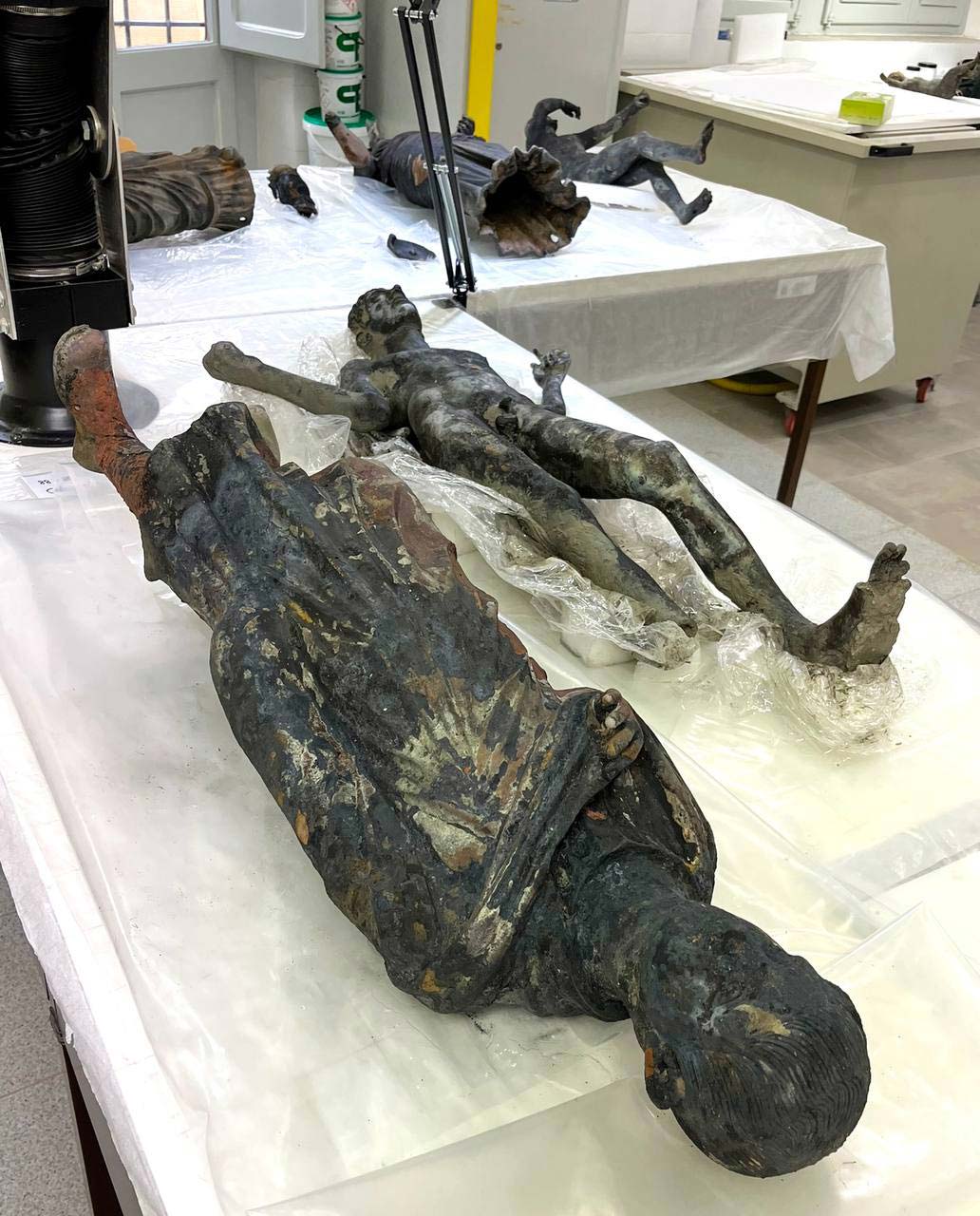 The bronze statues discovered in San
The bronze statues discovered in San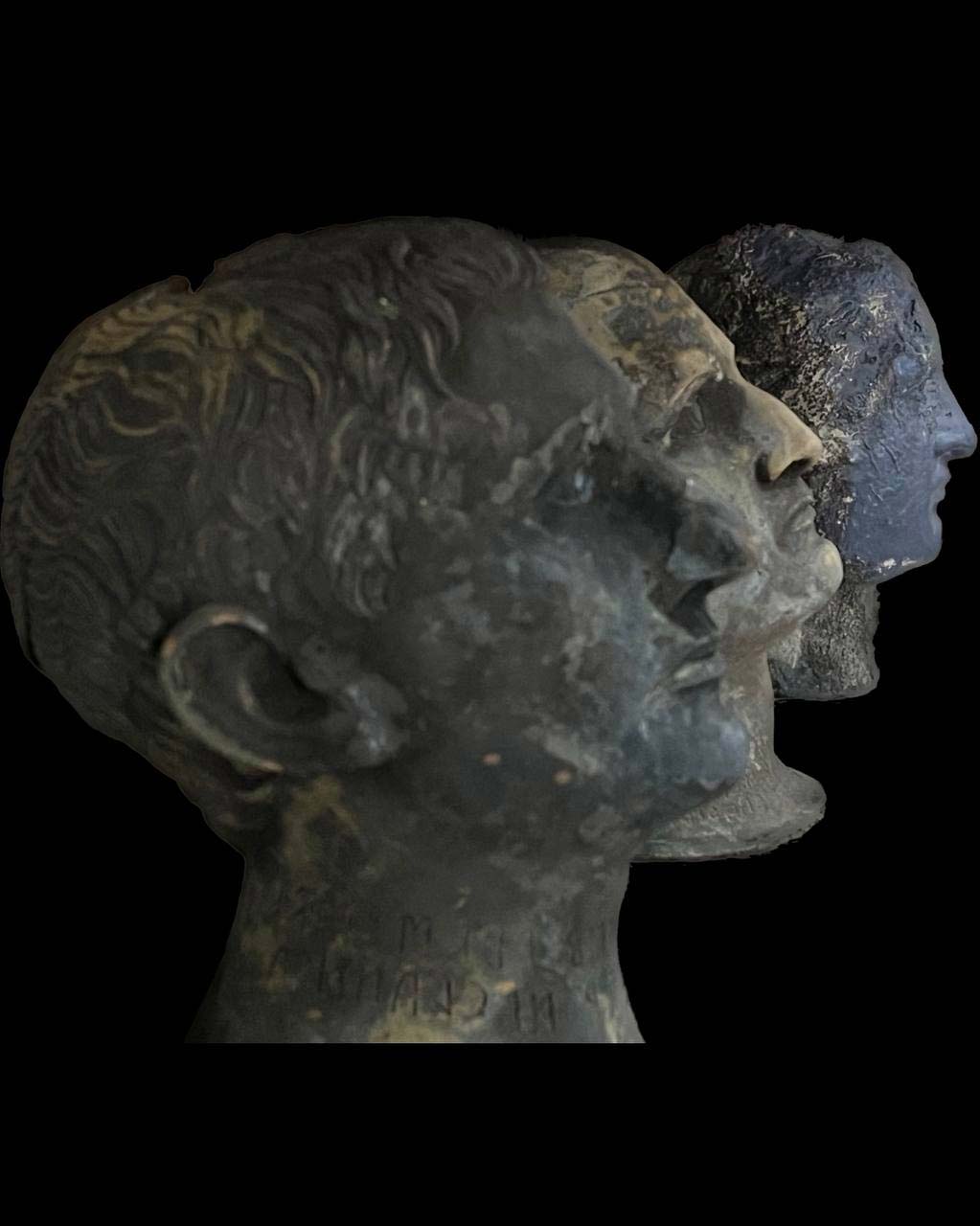 The bronze statues discovered in San Casciano
The bronze statues discovered in San Casciano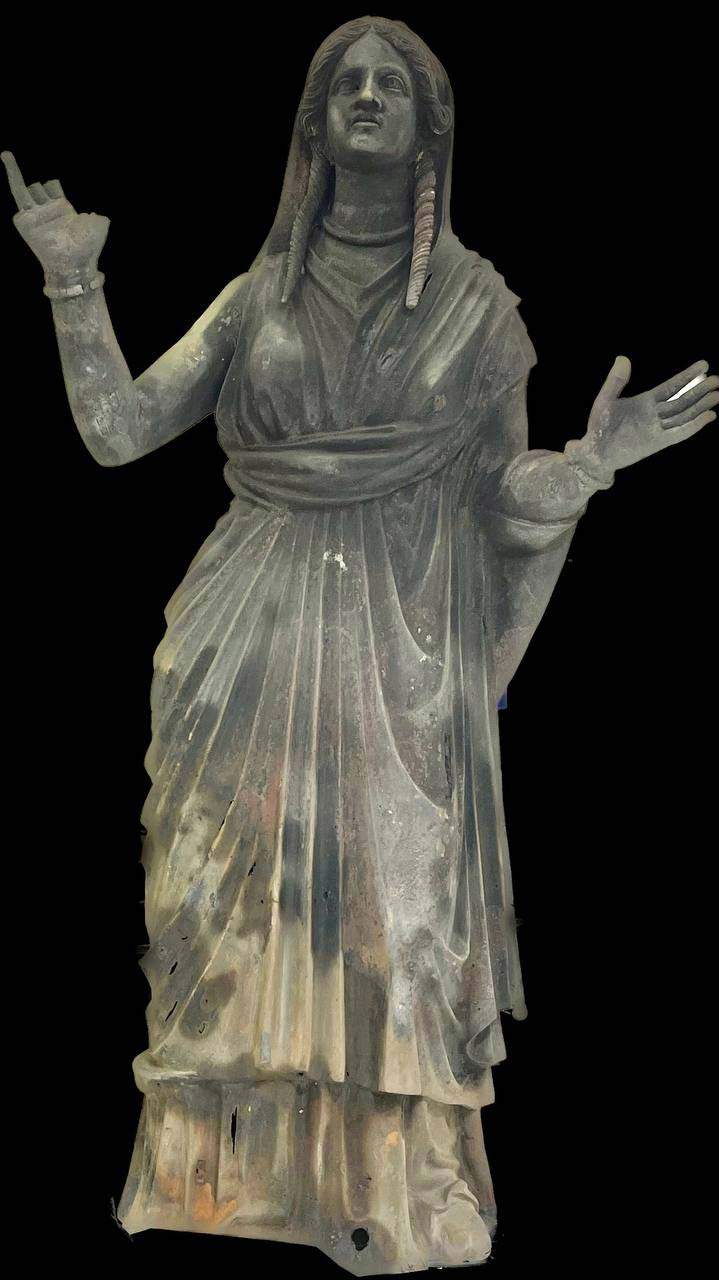 The bronze
The bronzeHowever, the water also put the archaeologists somewhat “in a bind” as they had to work with the continuous flow inside the pool. What were the difficulties from this point of view?
The difficulties have been enormous. Ours is a very difficult excavation site that also required a safety project. It was entrusted to specialized people, according to the law, and it involved the use of continuous pumping systems because 15 liters of water per second arrive in the tank; the more we dug, the more water came back to invade the tank. It was a prohibitive job accomplished with great will. There is to keep in mind that the most important thing about this site is the water, thermal and curative: it is the most important spring in Italy from the thermal point of view. San Casciano dei Bagni has the most thermal territory in Italy and is at the very first places in Europe for quantity of water and number of springs (forty); of these, Bagno Grande is the main one. It is therefore the characteristic of the place that has always determined its thermal vocation and the presence of such important archaeological remains because it was one of the most important sanctuaries in Italy.
What will be the next steps towards the discovered finds? Will they be subjected to any intervention?
There is a team of restorers, both from the Superintendency and from the Central Institute for Restoration, who are helping us in all this; there is a big project underway led by Prof. Jacopo Tabolli who is coordinating all the scientific and research part; there is an enhancement agreement already in place signed by the Municipality, the Region, the Superintendency and the Ministry of Culture, and the Ministry of Culture has already purchased a historic building within San Casciano dei Bagni to make it in a very short time, within a couple of years, a new big museum where all these finds and all the others that will be found will be displayed. An immersive museum project linked to the archaeological site.
How will it be musealized?
We have yet to decide that. However, to be a modern museum it has to be an immersive experience that reconstructs being inside the pool, the presence of water, and the objects have to be enhanced and told in the right way. We will use augmented reality, 3D, but not only that, we will describe the whole path that led to the museum. I would like to emphasize that the municipality is the concessionaire of this excavation: it is an initiative of the municipality that has invested in the recovery of its heritage. This never happens. The scientific direction is by Prof. Jacopo Tabolli of the University for Foreigners of Siena, and we work in close collaboration with the Superintendence and the Ministry of Culture, in a synergy that there is almost never in Italy.
Warning: the translation into English of the original Italian article was created using automatic tools. We undertake to review all articles, but we do not guarantee the total absence of inaccuracies in the translation due to the program. You can find the original by clicking on the ITA button. If you find any mistake,please contact us.





























